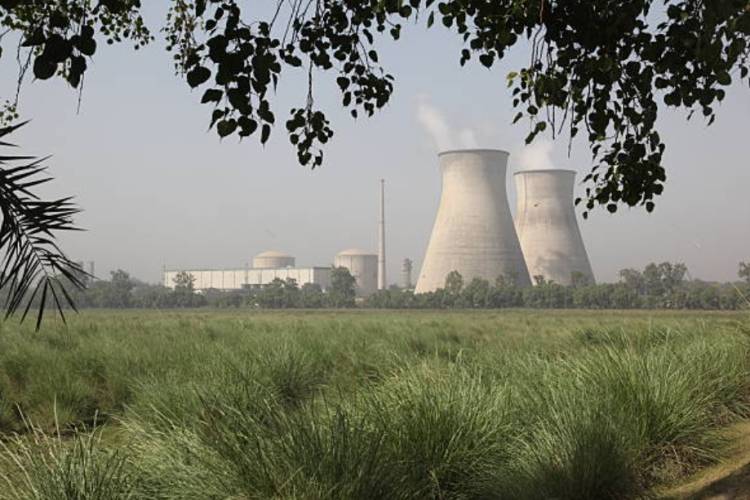
Nuclear power for India’s energy security: The recent meeting between Prime Minister Narendra Modi and US President Donald Trump has reinvigorated India’s nuclear ambitions. The two leaders reaffirmed their commitment to implementing the US-India 123 Civil Nuclear Agreement by expediting the establishment of US-designed nuclear reactors in India. This move is expected to enhance India’s energy security while addressing the challenges of transitioning to a low-carbon economy.
For over a decade, regulatory roadblocks, particularly India’s Civil Liability for Nuclear Damage Act (CLNDA), have hindered the full realisation of the nuclear deal. However, the recent announcement in the Union Budget 2025-26 to amend India’s Atomic Energy Act and the CLNDA has paved the way for increased private sector involvement and international collaboration in India’s nuclear energy sector.
READ | Income Tax Bill 2025 seeks to improve efficiency, streamline compliance
Importance of the US-India nuclear partnership
The civil nuclear agreement, signed in 2008, marked a turning point in India-US relations, ending decades of technology denial regimes against India. The agreement allowed India access to global nuclear technology despite not being a signatory to the Nuclear Non-Proliferation Treaty. The commitment from the Trump administration to facilitate technology transfer and local manufacturing of nuclear reactors in India signals a significant step forward in India’s nuclear trajectory.
Additionally, the US reaffirmed its support for India’s membership in the International Energy Agency (IEA), a move that would bolster India’s role in global energy policymaking. The IEA’s emphasis on nuclear power as a reliable, low-carbon energy source aligns with India’s ambitions to expand its nuclear footprint.
Is nuclear power a viable option?
While nuclear power is a reliable and low-carbon energy source, its economic feasibility remains a major concern for India. Nuclear energy production is currently three times more expensive than solar power in India, primarily due to the high costs associated with setting up nuclear plants, regulatory compliance, and waste management. Additionally, nuclear reactors take significantly longer to become operational, with an average construction timeline of six years compared withless than a year for solar projects. The financial burden and long gestation period could slow down the momentum of nuclear energy expansion if cost-reduction strategies are not effectively implemented.
The push for small modular reactors is partly driven by efforts to address cost concerns. SMRs are more affordable and quicker to deploy than traditional large-scale nuclear plants, but they generate less electricity per unit. While SMRs offer scalability and improved safety, their economic viability on a large scale is still being tested. India’s policy shift towards private sector participation in nuclear energy could potentially mitigate cost barriers through competition and innovation, but substantial government support and investment will be crucial in making nuclear power cost-competitive with renewables.
Modi’s recent discussions with French President Emmanuel Macron also emphasised the potential for collaboration on SMR development. The US, with its advanced SMR technology and private sector players like NuScale Power, General Electric, and Westinghouse, is expected to play a crucial role in India’s nuclear expansion.
Liability laws and public perception
While policy amendments and international partnerships are crucial, significant hurdles remain. India’s nuclear liability laws have historically discouraged foreign participation due to concerns about potential financial risks in the event of an accident. The proposed amendments to the CLNDA aim to address these concerns by establishing bilateral arrangements that would facilitate foreign collaboration and investment.
Public perception also poses a challenge. Despite nuclear energy’s advantages as a clean and reliable power source, local communities have resisted nuclear projects due to safety concerns. Protests at Kudankulam and Maharashtra’s Jaitapur site underscore the need for greater transparency and public engagement in India’s nuclear expansion plans.
India’s nuclear power targets
India currently generates 8,180 MW of nuclear power, a modest figure compared with its coal energy sector. The government has set ambitious targets to increase nuclear capacity to 22.48 GW by 2031-32 and 100 GW by 2047. This expansion aligns with India’s commitment to achieving 500 GW of non-fossil fuel energy by 2030, as pledged at COP26.
The expansion of nuclear power in India could have broader implications for global energy security. As the world moves toward decarbonisation, nuclear power is gaining renewed attention as a stable, non-intermittent source of clean energy. With 63 nuclear reactors under construction worldwide, the highest number since 1990, India’s nuclear ambitions could set an example for emerging economies looking to balance economic growth with environmental sustainability.
The Modi-Trump meeting has reignited momentum for India’s nuclear energy ambitions, unlocking opportunities for US-India collaboration in advanced reactor technologies. Policy reforms, international partnerships, and increased private sector participation are set to redefine India’s nuclear landscape.
However, for India to meet its ambitious targets, it must navigate public scepticism, streamline regulatory processes, and ensure sustained investment in research and development. If successfully implemented, India’s nuclear expansion can contribute to its clean energy transition, reducing reliance on fossil fuels while enhancing energy security for the decades to come.
